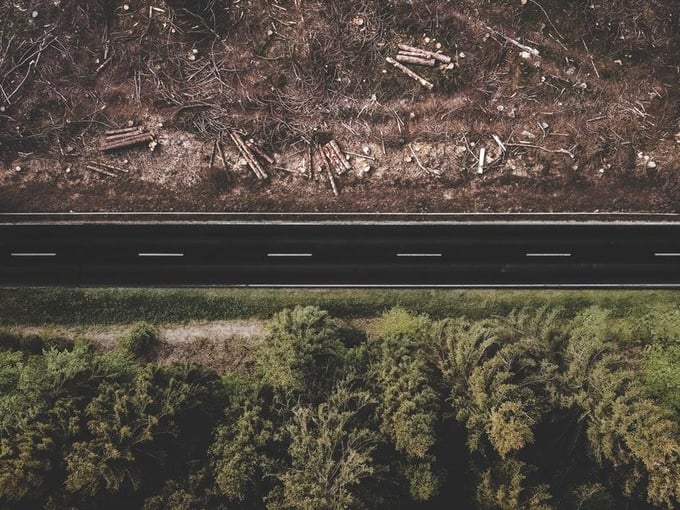
Earth currently has around three trillion trees. This may seem like a lot until you consider that this is half as many as existed before human civilization arose. As we said in a recent blog on climate change, no one and nothing is immune from the effects of climate change-related problems, and it’s going to take effort from every person and business to offset the effects.
Fiber Reinforced Polymer (FRP) is a more environmentally sound alternative to many traditional materials for bridge components, utility poles and more. From its production process to transporting it to its long-term durability, FRP helps companies reduce their impact on the environment.
Production with a Smaller Footprint
Unlike extrusion, which pushes material through a die to form the final product, pultrusion creates continuous lengths of FRP composites with constant cross-sections by pulling the fiber reinforcements (rovings) through a guide, a liquid resin bath and a heated die.
This process is cost-effective and efficient and has a lower environmental impact than traditional materials like wood, concrete and metals. Not only does it require far less heat than steel and aluminum, but it also uses less water for the cooling process and produces less CO2 and harmful fumes during production. Pultrusion also produces less waste compared to the many pounds of shavings of traditional materials entering landfills. Its overall energy efficiency saves company dollars and lightens the overall carbon footprint.
Even transportation has less of an impact: FRP is significantly lighter than metallic alternatives, requiring fewer trips (and their associated emissions) to transport the same amount of building materials.
Avoiding Deforestation
Because wood has been an essential building material for most of human existence, deforestation and tree cover loss are serious problems facing the planet. The need for mature trees for wood products far outpaces our ability to replant forests and let them grow to maturity – not to mention the impact on the ecosystems that depend on these trees. Pultruded FRP is an excellent alternative to wood, with no direct impact on deforestation.
Long-term Durability
In addition to a more efficient production process that avoids deforestation, pultruded FRP also has much longer durability than traditional materials.
Wood warps, rots and decays due to time, pests and weather. To make them more durable, wood products must be treated with chemical coatings like penta that can harm living beings and the wider environment when they seep into groundwater. Pultruded FRP products innately resist the decay and pests that degrade wood products – without the need for harmful coatings.
Metals and concrete reinforced with metal rebar are at serious risk of corrosion, which hastens the need for repair or even replacement to avoid failure. FRP is naturally corrosion resistant, even in high-salt seaside installations, giving it a much, much longer lifespan under harsh conditions – often 15 or more years with little or no maintenance – than concrete, metal and wood. A more durable product needs to be replaced less frequently, saving companies money and sparing the environment with the impacts of production and transportation.
FRP also has a better end-of-life than traditional materials. Metals like aluminum and steel cannot be recycled or reformed when used once. This produces manufacturing waste and waste when materials reach end-of-life. FRP can be reformed during manufacturing (producing less scrap) and can be recycled at end-of-life (producing less waste).
Creative Composites Group is a leading manufacturer of FRP and is committed to helping companies do their part of fight climate change and preserve our planet. Contact us today to discuss your project and FRP: the greener choice.


